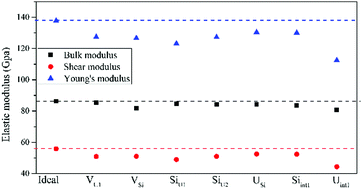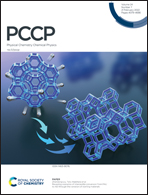First-principles study of point defects in U3Si2: effects on the mechanical and electronic properties
Abstract
In recent years, U3Si2 has been proposed as an alternative nuclear fuel material to uranium dioxide (UO2) because of its intrinsically high uranium density and thermal conductivity. However, the operation environment in the nuclear reactor is complex and extreme, such as in-pile neutron irradiation, and thus it is necessary to explore the radiation response behavior of U3Si2 and the physical properties of its damaged states. In the present study, first-principles calculations based on density functional theory were carried out to investigate the mechanical and electronic properties of defective U3Si2. Our results showed that the defect stability in U3Si2, except its interstitial defects, is dependent on its chemical environment. When vacancy, antisite or interstitial defects are introduced into U3Si2, its elastic modulus are decreased and its ductility is enhanced. Although the presence of defects in U3Si2 does not change its metallic nature and the electron distribution in its Fermi level, their effect on the partial chemical bonding interaction is significant. This study suggests that under a radiation environment, the created defects in U3Si2 remarkably affect its mechanical and electronic properties.



 Please wait while we load your content...
Please wait while we load your content...